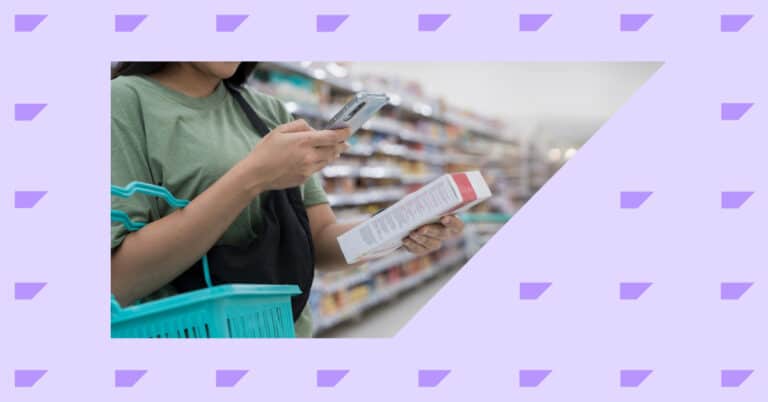For any savvy B2C marketer, it’s crucial to meet consumers at the most appropriate time, with a perfectly tailored message to ensure conversion and retention.
Nonetheless, consumers nowadays consumers have more outlets fighting for their attention than ever before. This excessive ‘noise’ means that brands must go above and beyond to engage, convert, and retain customers.
Businesses that focus on B2C marketing need to observe their customers closely. It’s critical for B2C marketers to understand the needs, wants, and challenges of their customers. By concentrating on their target audience, marketers can create personalized messages that better address their customers’ needs.
5 Successful B2C Marketing Examples
Here’s a look at 5 successful B2C marketing examples that will make you want to rethink your strategy in the upcoming months.
1. Reminder Emails
Reminder emails are a great way to connect with consumers, by delivering timely, important messages. These reminder emails help keep brands top-of mind (and top-of-inbox!) with customers, and also help facilitate upsells and conversions.
Some great examples of reminder emails come from car companies; below is an innovative example from Nissan. By collecting necessary customer data and efficiently organizing this data into profiles, Nissan can quickly segment their customers by when they purchased their cars. Nissan can then use marketing automation solutions to trigger reminders to their customers about upcoming maintenance appointments, service updates, and other special offers.

2. VIP Programs
VIP programs are a great way to increase engagement and drive customer loyalty. These programs allow ‘white glove’ customers to enjoy added perks and add-ons from a brand. When a customer has the opportunity to become a VIP, it also increases the chance of them becoming a brand ambassador, sharing their success story with friends and networks.
A great B2C example of a successful VIP program is Sephora’s VIB program (Very Important Beauty). One great thing about Sephora’s VIB program is that it only unlocks after customers spend a certain amount. This means that loyal customers are encouraged to spend more in order to unlock these special programs, which in turn offers more incentives for customers to spend money and increase revenue.
3. Social Retargeting
 A third successful marketing strategy is social retargeting. Retargeting occurs when a potential customer who has been searching a site moves on to other pages, or perhaps other competitors. Retargeting ads are triggered by what customers may have been searching, and can pop up on social media to help recapture interest and drive them back to a particular site. Retargeting can be especially helpful when a potential customer abandons a cart, and the ad can help remind the consumer what they left behind.
A third successful marketing strategy is social retargeting. Retargeting occurs when a potential customer who has been searching a site moves on to other pages, or perhaps other competitors. Retargeting ads are triggered by what customers may have been searching, and can pop up on social media to help recapture interest and drive them back to a particular site. Retargeting can be especially helpful when a potential customer abandons a cart, and the ad can help remind the consumer what they left behind.
Below is a genius social retargeting example from Expedia. This Facebook ad not only encourages viewers to click for last minute deals (promoting urgency), but it also allows them to ‘Like’ Expedia’s Facebook page. Social retargeting ads are a great way to quickly capture interest and convert this interest into clicks and followers on social platforms.
4. Truly Understand Your Customers
One important thing to remember when it comes to building a successful B2C marketing strategy, is to know the audience, their preferences, likes, and dislikes. Knowing the typical consumer, the challenges they are looking to solve, and their ideal buyer journey, is the key to creating engaging content that helps drive clicks, conversions, and revenue.
Below is a great example of how one brand, Tesco, truly understands its customers and what they are looking to purchase. Tesco is an international grocery store, and as such promotes home, food, and lifestyle content to their customers. The Tesco Living blog offers readers tips and tricks on how to live an easier life. The Tesco brand understands its audience is busy and hectic, and the content available on the blog speaks directly to this audience.

5. Invite-A-Friend Incentive Programs
For B2C marketers in general, incentive programs can be tricky. While they can definitely help increase new business and facilitate personalized conversations, it can also be grating to loyal customers to see that something they bought for full price just a few days ago is now on sale. The best way marketers can address the issue of incentive programs head on is with big data and machine learning, segmenting a consumer audience and then targeting them with specific messages and incentives to avoid confusion and frustration.
One brand that has the incentive program strategy down is Birchbox. Their invite-a-friend incentive messaging works with new and returning consumers alike, as it encourages loyal customers to spread the word about Birchbox without any real financial risk for the brand itself. Customers are incentivized with discounts and giveaways, increasing the chance of the newsletter being shared.
Final Thoughts
While these are just a few examples of B2C marketing programs, it’s often helpful to know what other successful brands are doing when starting to build and focus marketing strategy. It’s also important to collect inspiration and creative ideas.
What are some of your favorite B2C marketing campaigns? Let us know in the comments below.
Eager to learn more about how your organization can adopt more successful B2C marketing strategies this year? Request a free demo today!
Related Articles:












